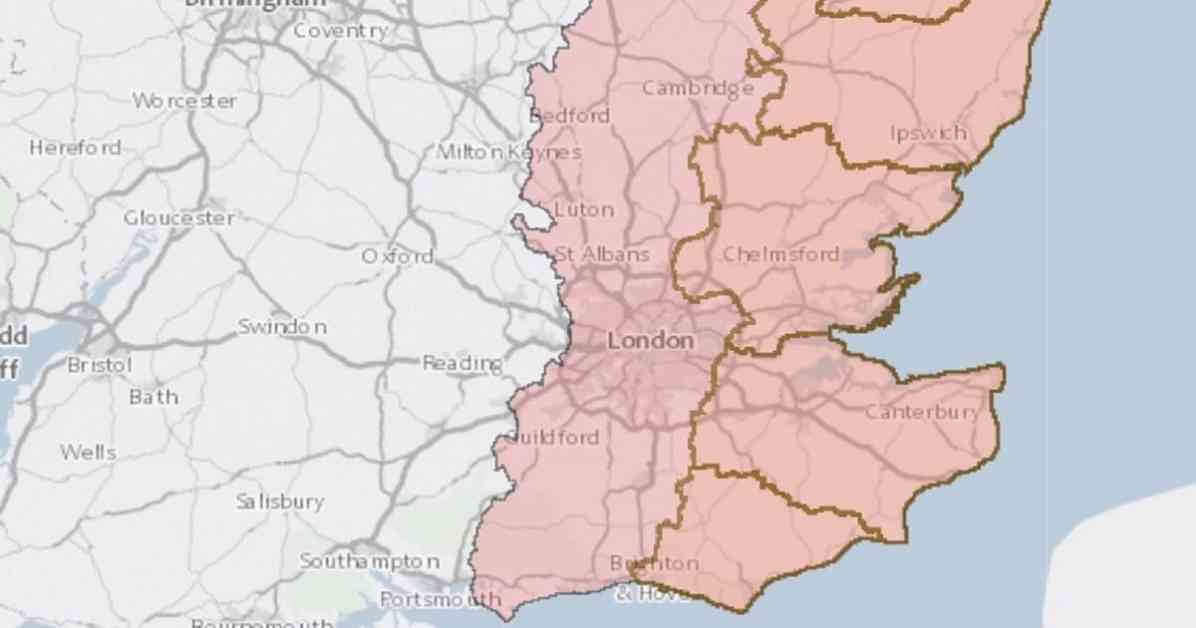Bluetongue Disease Outbreak: Extended Restricted Zone Updates
The bluetongue disease outbreak has taken a concerning turn as more cases of the disease are reported among livestock in the south and east of England. London has now been added to the bluetongue restricted zone, marking a significant expansion of the affected regions. The UK Chief Veterinary Officer has declared bluetongue restricted zones across these areas to prevent further spread of the disease, with a new map highlighting the impacted areas.
The latest action was taken over the weekend, starting from Saturday, September 21, after additional cases of bluetongue BTV-3 were identified near the original restricted zones. As a result, the extended restricted zone now encompasses all of Lincolnshire, Cambridgeshire, Bedfordshire, Hertfordshire, Greater London, Surrey, and West Sussex. This move aims to contain the spread of the bluetongue virus, which is primarily transmitted through midge bites and affects various animals such as cattle, goats, sheep, deer, and camelids like llamas and alpacas.
The impact of bluetongue on animals can vary significantly, with some showing no clinical signs while others may experience reduced milk yield or, in severe cases, fatality. The Department for Environment, Food and Rural Affairs (Defra) has reported an increase in cases of bluetongue in livestock, prompting the implementation of strict restrictions for all keepers of cattle, sheep, ruminants, and camelids in the disease hotspots. These restrictions include limitations on animal movements and the use of cleaning products to prevent further spread.
Despite the growing number of cases, it’s important to note that bluetongue does not affect humans, and meat and milk from infected animals are safe for consumption. Infected premises have been placed under restriction, and susceptible animals can only be moved under license within the Restricted Zone. Essential moves of susceptible animals can take place within the zone without a license, but any movement outside the zone requires a specific license. Additionally, a general license is available for transporting animals to designated abattoirs.
Deputy UK Chief Veterinary Officer Ele Brown emphasized the importance of adhering to the restrictions within bluetongue control zones to prevent the disease from spreading further. Brown stated, “As the number of bluetongue cases continues to rise, we are extending the restriction zone to mitigate the spread of the disease. It’s crucial for all farmers and keepers within bluetongue control zones to follow the restrictions and only move animals when absolutely necessary to protect their herds.”
While the impact of bluetongue on livestock is significant, it’s essential for affected individuals to report any suspected cases of the disease to authorities. The control zones will be continuously monitored and reviewed to ensure the effectiveness of containment measures.
What is Bluetongue? Symptoms and Impact on Humans
Bluetongue is an animal disease that primarily affects livestock, including cattle, sheep, goats, deer, and llamas. Symptoms of bluetongue can include a blue and swollen tongue, fever, reduced milk yield, and in severe cases, death. It’s important to note that bluetongue does not pose a threat to humans or food safety.
The first case of bluetongue in Britain was confirmed on March 8, 2024, marking the beginning of a concerning outbreak. Between November 2023 and March of the following year, there were a total of 126 cases reported in England, with the BTV-3 strain identified in Kent, Norfolk, and Suffolk. This outbreak was the first instance of bluetongue in Britain since 2007, when farmers were also grappling with other animal diseases such as bird flu and foot and mouth disease.
The impact of bluetongue on livestock can be devastating, affecting not only the health of the animals but also the productivity of farms. With the recent surge in cases, it’s crucial for farmers and keepers to remain vigilant and adhere to the necessary restrictions to prevent further spread of the disease.
Moving forward, continued monitoring and collaboration between authorities and livestock owners will be essential in containing the bluetongue outbreak and safeguarding the wellbeing of animals across affected regions. As the situation evolves, it’s important for all stakeholders to stay informed and take proactive measures to mitigate the impact of bluetongue on livestock populations.












